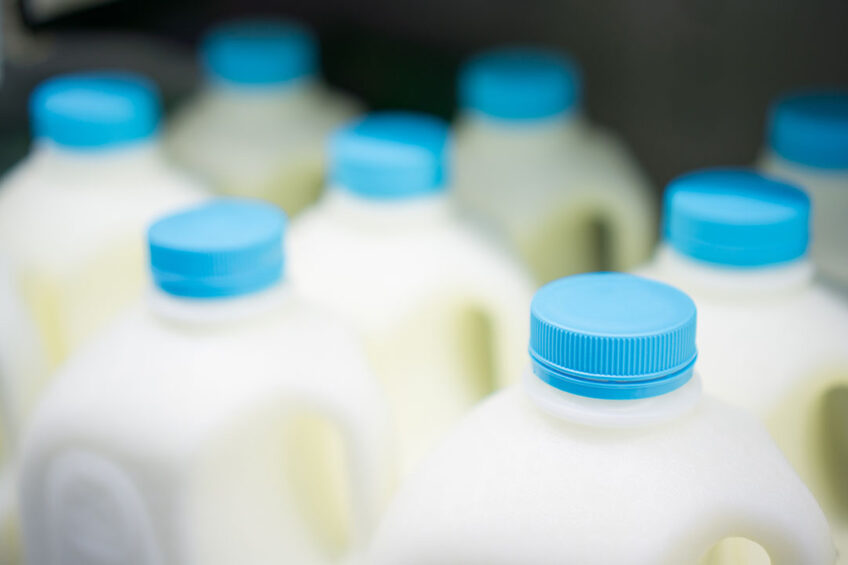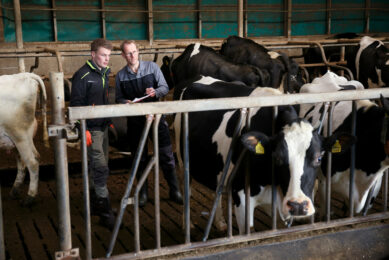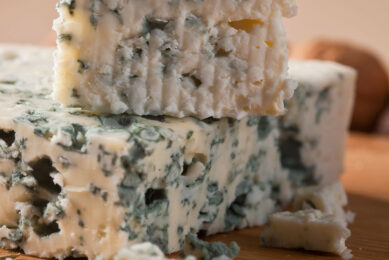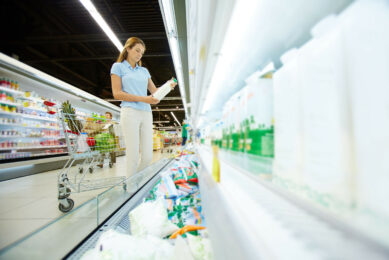A new era for Russia’s dairy industry

Russia’s government is putting a lot of effort into improving the quality of dairy products on the domestic market. The main goal is to boost dairy consumption per capita, which is hampered not only by the falling purchasing power of local population, but also because of the lack of consumer confidence in milk and other dairy products on grocery shelves.
Since 2014, when all European dairy products were wiped out from Russia’s dairy market, the word “counterfeit” became strongly associated with those dairy products that left. A year after the sanctions were put in place, Russia’s veterinary watchdog Rosselhoznadzor made an announcement that 20% of all dairy products on the domestic market were fake. In 2016, this figure increased to 30%.

“In a bid to cut production costs Russia’s dairy producers [when manufacturing dairy products] were mixing milk and other products with starch, chalk, soap, soda, lime, boric acid and gypsum,” Rosselhoznadzor said in a statement on its website. On other product categories for example in some regions up to 80% of all cheese was found to be counterfeit, and in many cases the tested cheese contained no milk fat at all, Rosselhoznadzor estimated.
Evidence
The statements made by Rosselhoznadzor were lambasted by Russia’s union of dairy manufacturers Soyuzmoloko. “Those claims are not backed by evidence,” Andrey Danilenko, chairman of Soyuzmoloko said in an open letter filed to the Russia’s Agricultural Ministry. “These statements have had a negative impact on the reputation of the national dairy industry and may trigger a drop in the domestic demand for dairy products,” he warned.
Rosselhoznadzor’s findings, however, were confirmed by numerous studies by independent consumer protecting organisations. For example, out of 2,500 dairy products inspected by organization Roscontrol over the past few years, 779 were blacklisted for being counterfeit or for having major quality issues, Roscontrol said in a statement released in August 2019.
The most widespread violation was replacing milk fat with palm oil or other cheap substitutes, Roscontrol said. In 2018, 21.6% dairy products on the grocery shelves in Russia were found to be fake, Rosselhoznadzor estimated.
Economic
It is 30% cheaper to manufacture cheese products substituting milk fat with palm oil, Danilenko explained, adding that there are questions regarding not only the quality of the Russia’s dairy products, but also the same products that are of Belarus-origin and that are imported into Russia.
It is believed that palm oil became extremely popular in Russia because of the shortage of high-quality raw milk. The country was importing up to 25% of all raw milk required to produce cheese, butter and other products prior to the 2014 food embargo primarily from the European Union, Soyuzmoloko said.
“Due to the shortage of raw milk and low requirements for the microbiological safety of milk, producers are free to purchase milk with quality they are not fully confident in. For milk not to be detected as being or smelling ‘off’ saltpeter is mixed to it,” Alexander Borisov, director of Roscontrol, said at that time adding that there was no any information about saltpeter on the product label.
There is also an opinion that the shortage of raw milk also temporary raised the problems of feed antibiotics in the Russian dairy industry to the new level.
“After consuming antibiotics, it is prescribed that a cow should stay in quarantine for two weeks so that the remnants of the drugs would not get into the milk,” said Sergei Raksha, executive director of the consumer protecting organization Truth About Food. In 2015, due to a shortage of milk on the market, in Russia almost nobody was willing to withstand these deadlines. This leaded to a spoiled taste as milk with antibiotics does not ferment well for cheese, he added.
The production of raw milk in Russia slightly increased since 2014, to 31 million tonnes. The government aims to push this figure up to 34 million tonnes in 2024.
Consumers
Some physicians in Russia raised concerns that even sporadic consuming of palm oil could be extremely dangerous for cardiovascular system. These concerns puts pressure on the dairy production consumption in Russia.
“The consumption of dairy products slumped by 16 kg in milk equivalent between 2011 and 2017, to 236 kg, while the recommended dietary allowance stands at 325 kg per capita,” the Russia’s Agricultural Ministry estimated. “The consumption has been falling despite the growing domestic production, and to some extent this could be attributed to the drop in purchasing power of the local population,” the Ministry said.
Palm oil
Russia’s Health Ministry chief nutritionist Viktor Tutelyan made a statement saying that all reports about the harmfulness of palm oil to the cardiovascular system was false, adding that “palm oil even is used to prevent the development of atherosclerosis and lipid metabolism disorders.” This, however, has not prevented the Russian Parliament from raising VAT on palm oil from 10% to 20% in August 2019 in a bid to cut its use in dairy industry.
In 2018, Russia imported 1.06 million tonnes of palm oil, 18.9% up compared to the previous year, Russian Federal Customs Service estimated. Import has been seen steadily growing since 2014, when it was estimated at 659,000 tonnes.
In addition to concerns about the possible harmful effects of Russia’s dairy products, there are also other problems. The Russian press has been repeatedly reporting that consumers in the country were discouraged with the taste of the some products. Quite often it was said that “the new Russia’s cheese taste like rubber”.
Certification system
2019 is going to be a year of change, as the Russia’s government is embarking on several steps aimed to tackle the “counterfeit crisis” on the domestic dairy market.
The most important change is that dairy manufacturers are included into the Mercury electronic veterinary certification system. All milk products, cheese, fermented milk, yogurts and other products must be accompanied with veterinary documents within the new system from 1 November 2019.
“The main idea is that all companies must declare what raw materials they use to manufacture products. Within the system, it will be transparent how much milk or palm oil gets in to the plant and how much is produced,” Rosselhoznadzor said. The system has been originally introduced in Russia on 1 July 2018 and has already proved its value in other segments of the Russia’s food market.
With complete transparency Mercury would be able to make fraud on the dairy market almost impossible. Nevertheless, there is an opinion that the system in its current state may not be enough to deal with counterfeit in the dairy industry.
“There are no recipes in Mercury, which means that the inspection bodies do not have an understanding of how much finished products can be actually manufactured out of the supplied raw materials. Each company produces a different product range, and sometimes even the same product, but with completely different formulations,” said Marina Petrova, deputy chairman of the Moscow Chamber of Commerce and Industry.
“For example, in order to make 1 kg of cheese, you need 10 liters of milk, and after that you have whey left. How it is used inside the plant and in what it is being processed – each company decides independently. It is a big question how this information would be interpreted by supervising bodies,” Petrova added.
Tagging system
In addition, Russia’s Ministry of Industry also want to introduce a new electronic tagging system for all dairy products. The Ministry explained that it would also improve traceability of products alongside the supply chain. Milk producers, however, complain that both Mercury and the new tagging system put an additional financial burden on dairy producers.
“In my opinion by introducing the compulsory tagging system, the Ministry is trying to rob the dairy industry which already today has minimal profitability,” said Ludmila Manitskaya, chairman of the Russian Dairy Union. “The problem is that equipment for tagging is not manufactured in Russia. It was estimated that the introduction of that system would cost dairy manufacturers Rub115 million ($ 1.8 million) per year, excluding the cost of equipment.”
The compulsory tagging of all products on the dairy market is slated to be introduced as of 1 March 2020, but may be delayed as many dairy producers are against this project.
Most experts agree that once the new systems are up and running, there would be no room for any counterfeit dairy products in Russia. By bringing order to the domestic market, Russia’s government also eyes expanding export potential of the domestic dairy industry.
Russia’s President Vladimir Putin set the task to boost agricultural exports from Russia from $ 23 billion in 2018 to $ 45 billion in 2025 and dairy industry is considered to be a segment where significant growth in export suppliers can be achieved. In 2018, Russia exported dairy products to the value of $ 235 million, and there are big hopes that this figure will grow in the years to come, as the country has recently been given permission to export dairy products to China.
Join 13,000+ subscribers
Subscribe to our newsletter to stay updated about all the need-to-know content in the dairy sector, two times a week.










